The last iEXPerience event of Spring Semester 2023 was held on June 24.
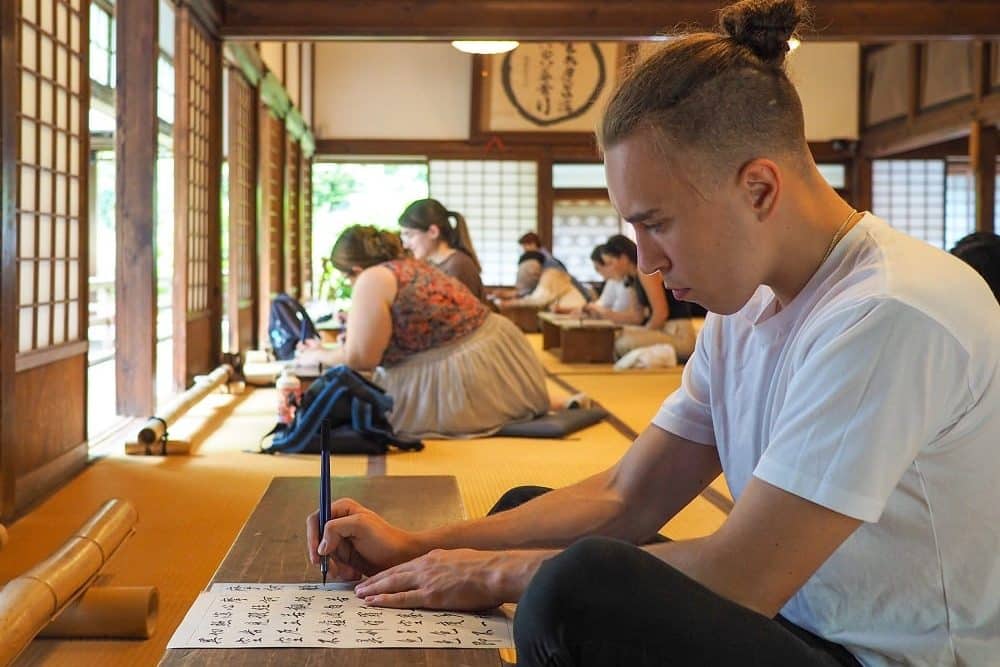
Twenty-two exchange and short-term study abroad students visited Erinji Temple in Koshu City to learn about Yamanashi history, tea ceremony, and Japanese calligraphy. This iEXPerience Program event was organized by the iCLA Study Abroad Team and Professor Will Reed to provide iCLA’s short-term study abroad students and exchange students a learning opportunity outside of the classroom where students can gain a deeper understanding of Yamanashi culture and history and enrich their study abroad experience.
Erinji is a 700-year-old temple that is notable for housing the grave of Yamanashi warlord and icon, Takeda Shingen. Erinji has several nationally and prefectural designated cultural properties especially relevant to the Sengoku Period. Among the temple’s notable cultural properties is its Sanmon, which is evidence of Oda Nobunaga’s ruthlessness during the Sengoku Period. In 1582, over a hundred monks were trapped inside the Sanmon when Nobunaga set fire to it. Erinji’s Shikyakumon was also burned down by Oda Nobunaga. Tokugawa Ieyasu rebuilt the bright red gate in 1606, and it is Erinji’s oldest surviving structure.
A historically significant site and beautiful premise, it is an excellent destination for learning about Yamanashi history and practicing Japanese calligraphy and tea ceremony. iCLA has visited Erinji twice since the start of the iEXPerience Program – Japanese Arts and History Up-Close at Erinji Temple and Japanese Tea Ceremony and a Garden Light-Up at Erinji Temple.
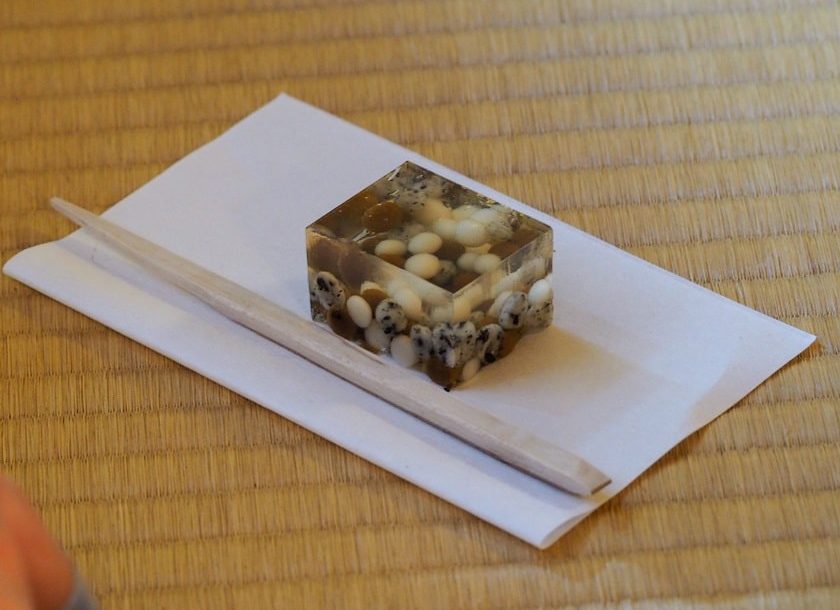
Tea ceremony or Sado is a traditional fine art linked to Zen Buddhism and samurai culture. To start, students had the opportunity to experience Japanese tea ceremony in the temple’s tearoom. The tea master taught students the appropriate etiquette for entering the tearoom, the significant elements of the tearoom, and finally, the ceremony of drinking and serving tea. Students enjoyed wagashi (Japanese sweets) and matcha served by the temple staff. The wagashi was made with seasonal imagery in mind – for this occasion, a riverbed.
Under the gracious instruction of the tea master, the students tried their hand at tea ceremony. In pairs, the students alternated tea ceremony roles of host and guest – one person as the host making and serving matcha, and another as the guest receiving it. After concluding the tea ceremony, students had the opportunity to ask Head Priest Furukawa Shuken about Erinji Temple, Zen Buddhism, and the lessons learned in his own life path in becoming a monk.
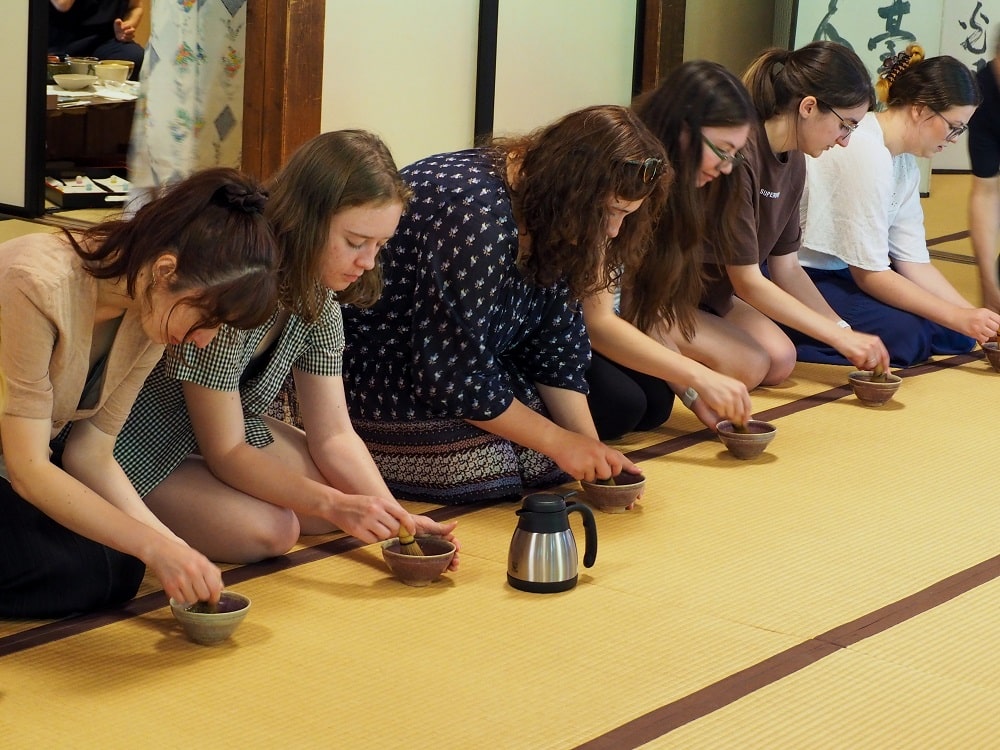
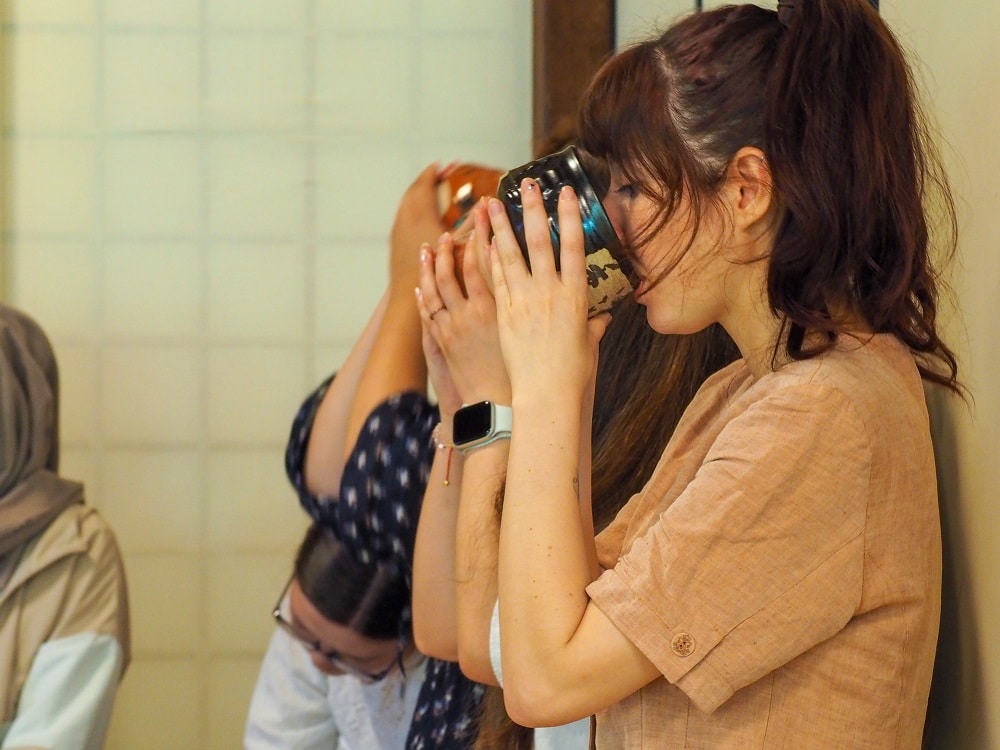
[My favorite part of the iEXPerience trip was] the opportunity to go around the temple and the history that we were told about it. Also the discussion with the priest was wonderful and insightful.
Exchange Student
Students then had the chance to see another one of Erinji’s cultural properties designated by Yamanashi Prefecture, the Takeda Fudo-son. The Takeda Fudo-son is an intricate Fudo-Myo-O statue designed with the likeness of Takeda Shingen. It is said that he modeled for the statue and that the chest of the statue was painted with lacquer containing hair Takeda shaved off and added to the lacquer. Students had the opportunity to see the Fudo-Myo-O and Head Priest Furukawa explained its historical and artistic significance and answered questions from students.
This was by far my favourite field trip experience. I like how everyone in the temple is so kind to us and are willing to share their knowledge. I’ve learned about the fate of Takeda Shingen’s soldiers, his statue, about the temple itself and Zen teachings.
Exchange Student
Japanese calligraphy or Shodo is another traditional fine art linked to Zen Buddhism and samurai culture. For the final workshop of the event, Professor Will Reed led a Japanese calligraphy workshop on Shakyo, or copying sutra. Reed is a professional calligrapher and teaches iCLA’s calligraphy course, “Calligraphy and Kanji Culture”. In the serene environment of the temple, students copied the Heart Sutra, learning to put concentration and patience into each character. Copying the Heart Sutra is a meditative activity that purifies the mind and body.
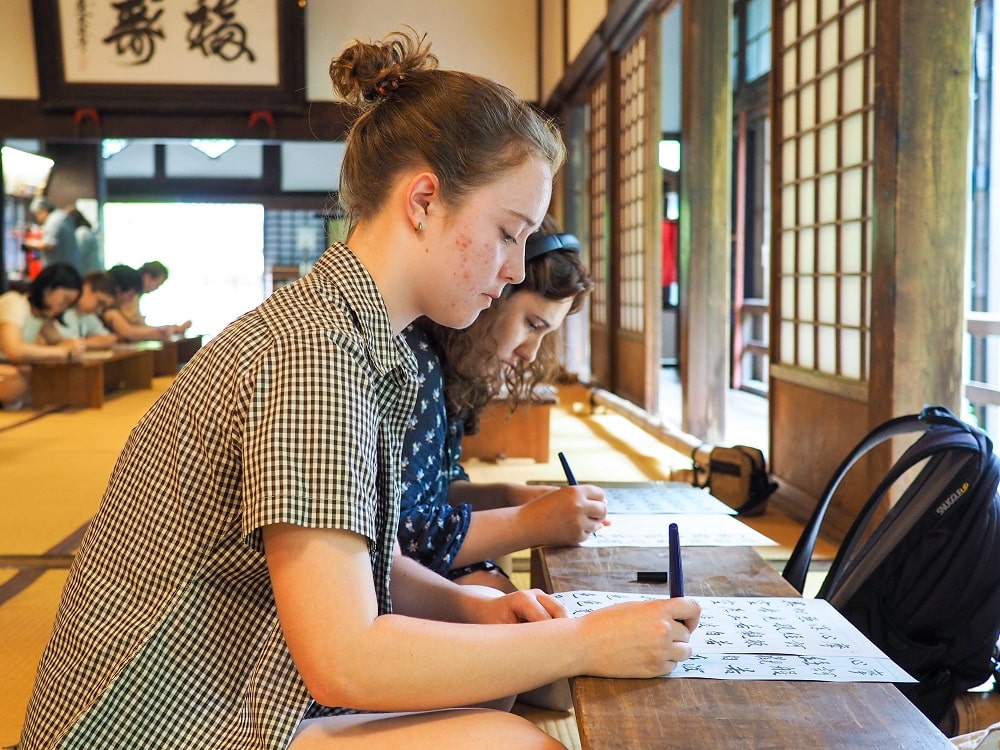
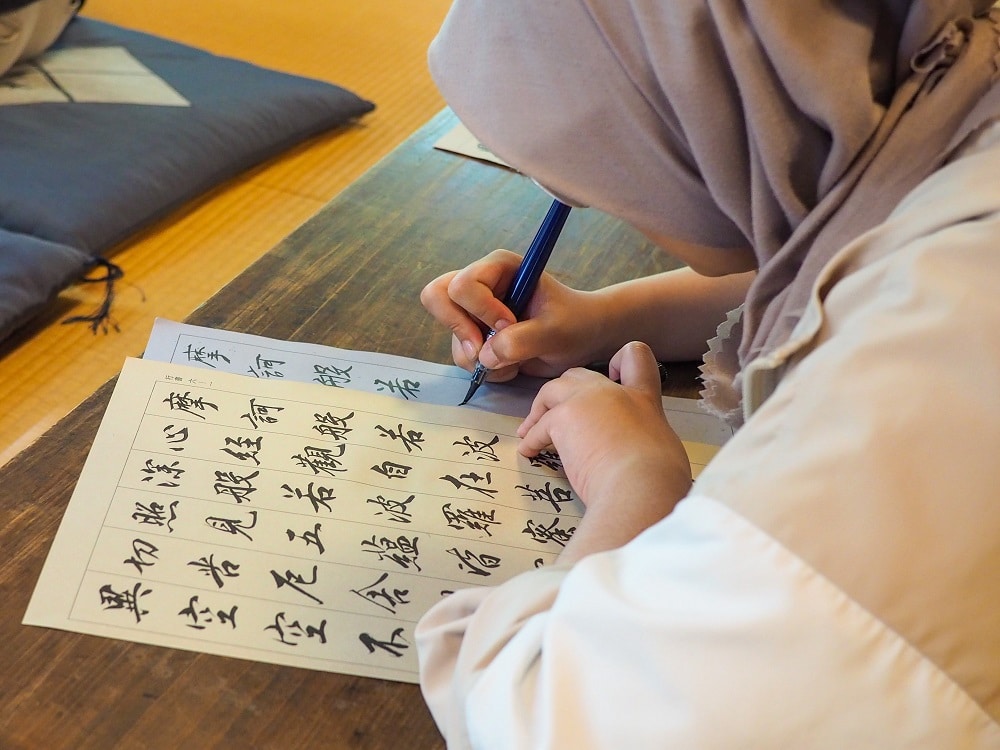
The Heart Sutra is the most famous of the Buddhist Sutras, and is frequently chanted and painted in Buddhist temples. It is considered to be like a mirror that helps you to reflect and see things clearly as they are. The evidence of this is how well you are able to copy the characters in their beautiful asymmetric balance, the shape, and quality of each of the strokes, and how the characters are suspended in space. The meaning is almost secondary, although it refers to the state of enlightenment, free of limitations and mental fixations. Many students experienced painting this Sutra for the first time, and did surprisingly well. It was a great way to engage in an immersive meditative experience in a traditional Rinzai Zen Temple.
Professor William Reed
To conclude the event, students had free time to explore the temple grounds. Under this iEXPerience event, students learned about various facets of Japanese culture and history such as tea ceremony, Shakyo practice, and Zen Buddhism. Moreover, they gained insights into Erinji’s historical significance within the region of Yamanashi and its noteworthy cultural assets.
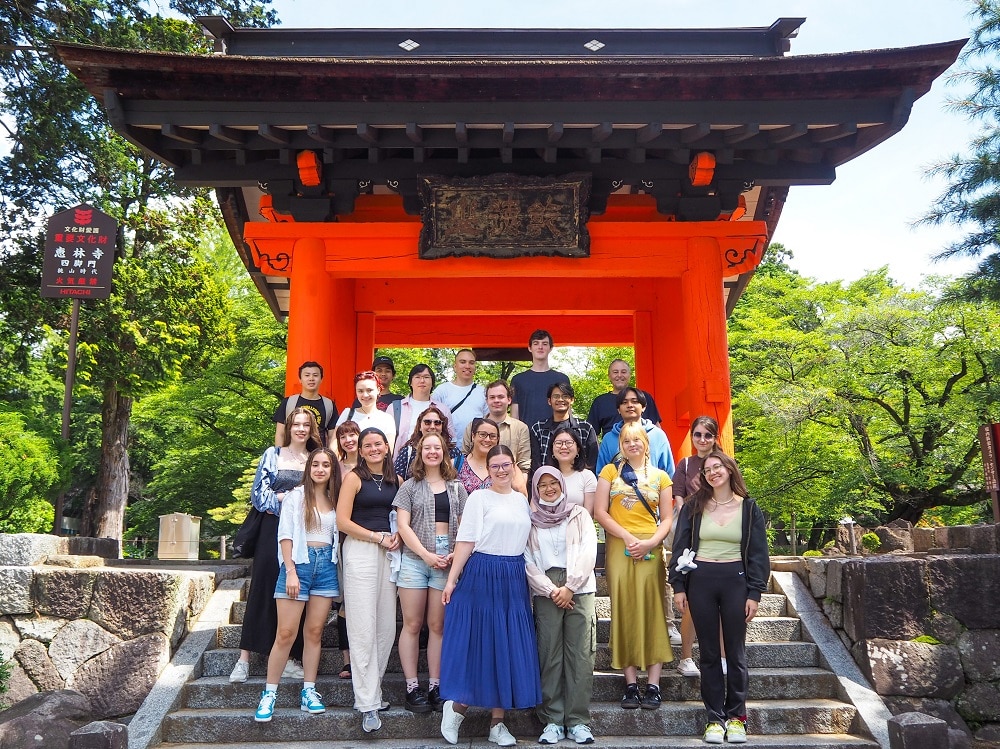
Links
iCLA Study Abroad Program
Erinji Temple
Yamanashi Tourism Bureau: Erinji Temple
iEXPerience: Wadaiko with Yamanashi High School Students
iEXPerience: Hoto Workshop and Exploring Shosenkyo Gorge
iEXPerience: Discovering Koshu Wine

